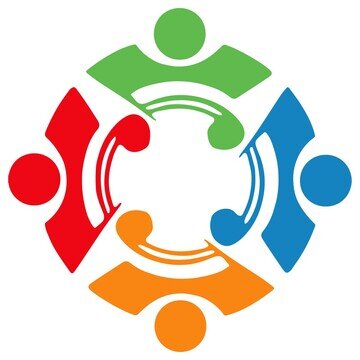56. Collaborate … it helps employees connect
In an individualistic culture—and a particularly divisive social climate—we’re often pitted against each other. It’s an “us vs. them” or “everyone out for themselves” mentality.
In the workplace this often looks like competing (against each other) for finite resources. This type of culture fuels distrust and loneliness.
In a competitive environment, employees are pushed to compete for a “finite pie” of resources.
Data point of the week
The TED Talk, Why it’s time to forget the pecking order at work, describes fascinating research on the parallels between breeding chickens to optimize for super-producers (egg-layers), and work environments that elevate individual “superstars.”
I recommend watching, but in case you don’t, here’s the cliff notes version (spoiler alert).
Allocating more resources, recognition, and power to individual super-performers backfires in a big way. It creates a competitive environment in which a handful of employees are OVERVALUED, while the majority are undervalued. This leads to dissatisfaction and disengagement and undermines employeeconnection.
According to a report by Cigna, nearly two thirds of American workers are lonely.
The same report estimates that “Lonely workers are less productive than non-lonely workers; moreover, each lonely worker may cost their employer nearly $4,200 a year in additional workdays lost. At the national level, loneliness could cost the U.S. economy over $406 billion a year.”
Loneliness and disconnection also lead to higher turnover. Lonely employees are twice as likely to think about quitting as non-lonely employees. Gallup estimates the cost of replacing a single employee at between .5 and 2 times their annual salary. Ouch! And that doesn’t take into account the hit to morale from the increased workload and stress burden on those left behind.
Reflection
I’ve worked in an environment that spotlighted “superstars” and enforced a strong pecking order. It was miserable!
The alternative is to create a more inclusive work environment that values the contributions of all employees and encourages collaboration over competition. These types of environments also happen to have dramatically higher productivity.
Take this MIT study on what makes teams successful. They found it has nothing to do with the individual members of the team (superstars) or even the collective IQ of the team. Instead, it came down to these three characteristics:
Team members show high social sensitivity to each other (similar to Google’s findings on the importance of creating psychological safety).
Team members give each other roughly equal time, so no one voice dominates.
Successful teams have more women on them (maybe because women are more likely to meet conditions 1 &2?)
A great way to increase social sensitivity and collaboration is to help employees connect. This has the added benefit of decreasing loneliness while also increasing engagement and retention.
Many workplaces simply hope that employees will make connections on their own, but going by Cigna’s research (above) only about a third do, while the other two thirds of employees remain disconnected.
Then there are workplaces that are more intentional about creating a positive culture and helping employees connect. Offering employee ProjectConnect groups is a simple model for that. It helps employees connect and build positive relationships quickly. Groups have been successful in settings ranging from college campuses to small community organizations to corporate law firms. I always love to hear feedback on how it’s going … like these participant quotes:
“ProjectConnect helped me think of the people in the hallways as more than just names. I learned a lot about those in my group and am happy to have them as new friends.”
“We were able to get to know each other on a more personal level and on light and heavy topics both. I cannot remember the last time I laughed so much at the firm!”
“It was a wonderful experience. I loved meeting new people and learning new perspectives! It nourished my outlook and my spirit.”
Connection Skill & Action Step: Collaborate
Some tasks can be accomplished more efficiently alone. However, for larger projects or complex problem-solving, it’s helpful to collaborate with people who have a diverse range of knowledge, experience, and perspectives. Here are a few questions to inspire more collaboration at work and home:
Is there an area you’d like to reach more people and have greater impact? Who can you partner with from different parts of your organization, to pool your collective resources, connections, and authority to create wider impact?
For example, engaging in a joint initiative, or planning an event together.
What’s a problem you haven’t been able to solve on your own? Who can you invite to add a fresh perspective or different skill set? Can you shift from “this is my problem” to this is a problem we need to address collectively?
For example, at home, “the house is a mess” could become a problem the whole family collaborates on to solve.
Or, at work, a group could plan how to generate more resources to complete an important project.
In a collaborative environment, instead of fighting for YOUR slice of the pie, employees are empowered to think about how to generate enough for everyone … (bake more pies)!
Is there project or organizational challenge that requires buy-in from diverse groups to be successful? How can you get engagement from those groups?
For example, when drafting a new policy, consider inviting the people who will be most impacted to the table, to think through potential issues and help with the rollout.
Questions to reflect on or to spark conversation. Please share your responses in the comments—we love hearing from you!
How have competitive or collaborative work environments affected your experience on the job?
Leave the pecking order to chickens!




